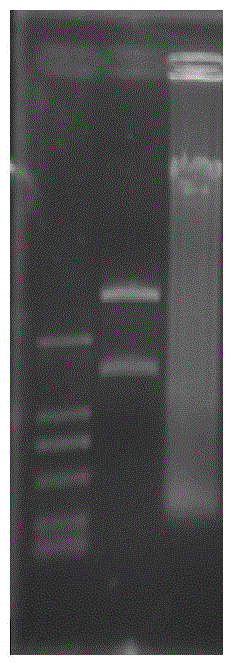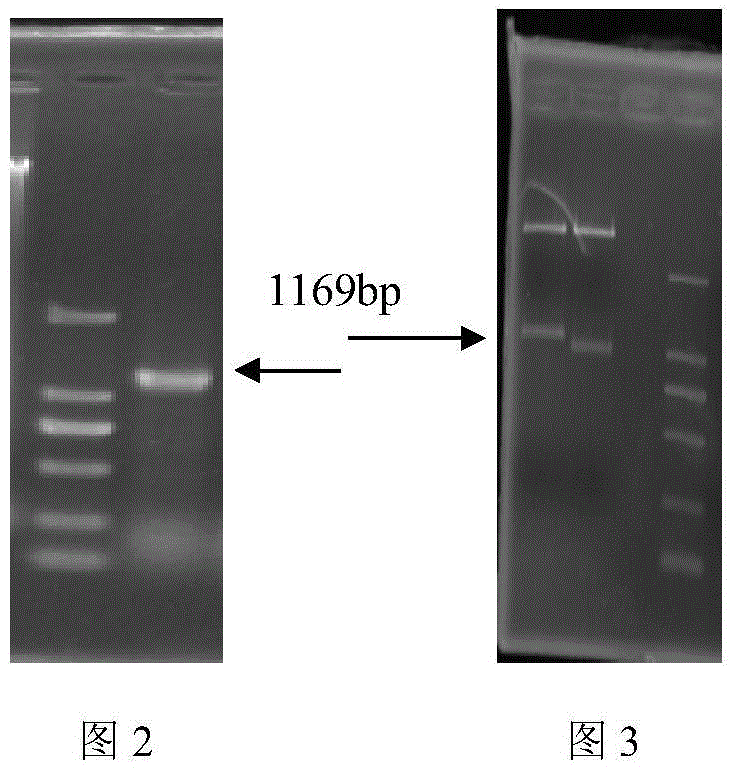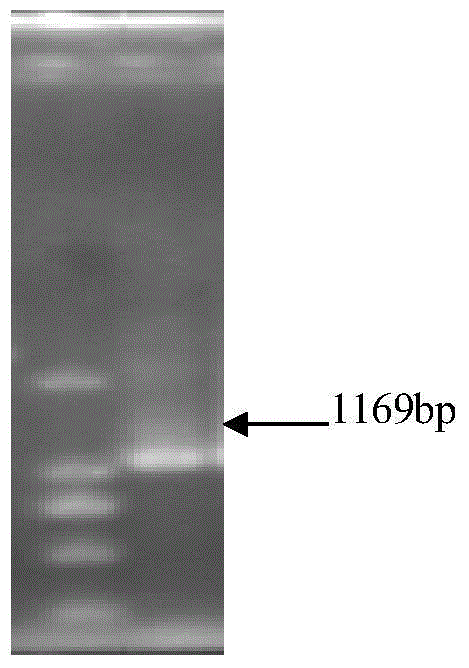Acyrthosiphon pisim CYP6A13 promoter and activity analysis
A pea aphid and promoter technology, applied in the field of DNA sequence, can solve the problem of the lack of a pea aphid promoter and achieve the effect of stable expression
- Summary
- Abstract
- Description
- Claims
- Application Information
AI Technical Summary
Problems solved by technology
Method used
Image
Examples
Embodiment 1
[0024] Example 1: Cloning of the CYP6A13 promoter of the pea aphid
[0025] The promoter of the pea aphid P450 gene CYP6A13 (the promoter sequence includes the DNA nucleotide sequence of the -1bp to -821bp region relative to the transcription start site of SEQ ID NO: 1), in the 5' region of the pea aphid CYP6A13 gene identified in the sequence.
[0026] The pea aphid P450 gene CYP6A13 is registered in NCBI GenBank (accession number: HM009309), and the sequence listing shows the DNA sequence of the promoter and 5' untranslated region of the above gene of the present invention. In the list of promoter sequences in this document, the base of the transcription initiation site is indicated by +1, and ATG is marked in red. And use the promoter analysis website to analyze the core elements of the promoter. Promoter analysis website http: / / www.gene-regulation.com / pub / programs / alibaba2 / index.html.
[0027] Taking pea aphid genomic DNA ( figure 1 ) as a template, using a pair of spe...
Embodiment 2
[0028] Example 2: Construction of the pea aphid CYP6A13 promoter expression vector pGL3-CYP6A13(-1322 / +229)
[0029] The pisa aphid CYP6A13 promoter and 5' untranslated region (see sequence listing) cloned in Example 1 were inserted into the pGL3 vector, thereby constructing the pGL3-CYP6A13(-821 / +349) vector.
[0030] More specifically, the promoter sequence was amplified using primers (5-ACGCGGTCGTTCGCTAGATTCAACAGGGT-3, 5-CTCGAGAATCGGCTTGATGTAGGGCAC-3) and cloned into pGL3 vector MluI and XhoI sites to construct pGL3-CYP6A13(-1322 / +229 ), used to drive the expression of Luc+, identified by PCR ( Figure 4 ) and enzyme digestion identification ( Figure 5 ) to obtain the recombinant plasmid of the promoter and the vector.
Embodiment 3
[0031] Example 3: Identification of the activity of the CYP6A13 promoter of the pea aphid of the present invention
[0032] Sf9 cells were seeded in 24-well plates (4×10 5 cells / well), the pGL3-CYP6CY3(-2230 / +71) construct (2μg / well) and the control reporter gene plasmid phRL-TK (Promega; 0.2 μg / well),. After 48 hours, cells were harvested and the resulting lysates were used to measure luciferase activity (Promega). Such as Figure 6 As shown, the cells transfected with pGL3-CYP6A13(-821 / +349) had very high luciferase activity.
PUM
 Login to View More
Login to View More Abstract
Description
Claims
Application Information
 Login to View More
Login to View More - R&D
- Intellectual Property
- Life Sciences
- Materials
- Tech Scout
- Unparalleled Data Quality
- Higher Quality Content
- 60% Fewer Hallucinations
Browse by: Latest US Patents, China's latest patents, Technical Efficacy Thesaurus, Application Domain, Technology Topic, Popular Technical Reports.
© 2025 PatSnap. All rights reserved.Legal|Privacy policy|Modern Slavery Act Transparency Statement|Sitemap|About US| Contact US: help@patsnap.com



